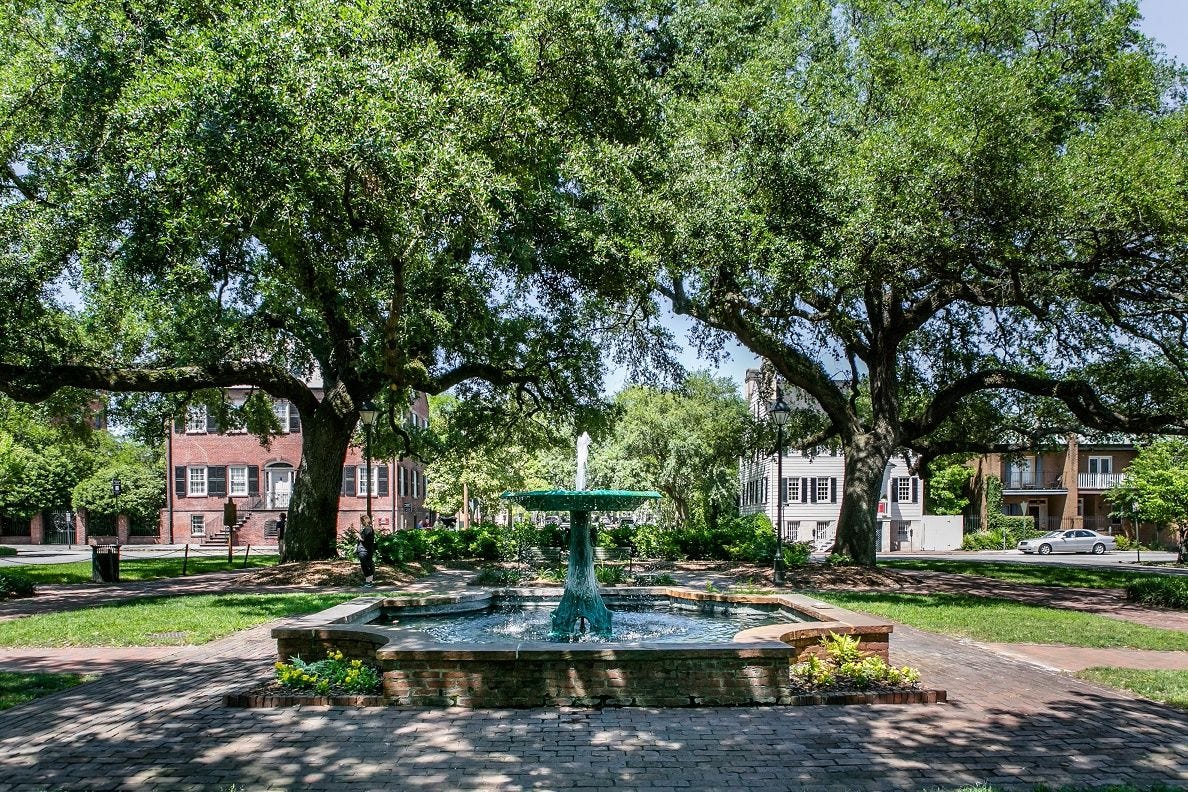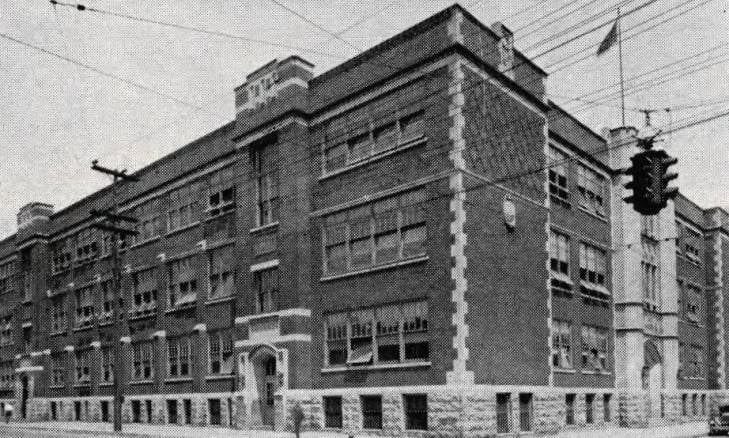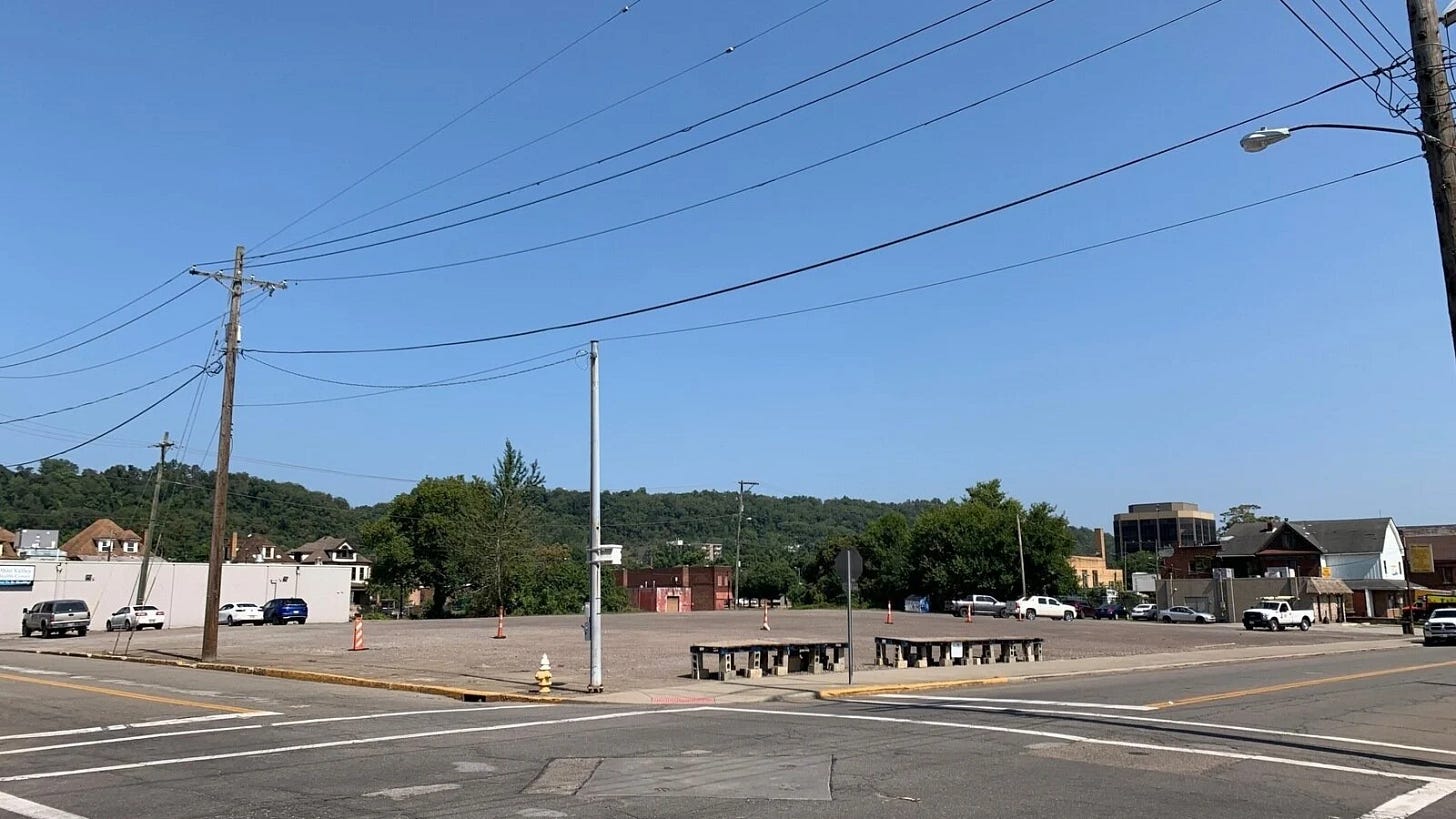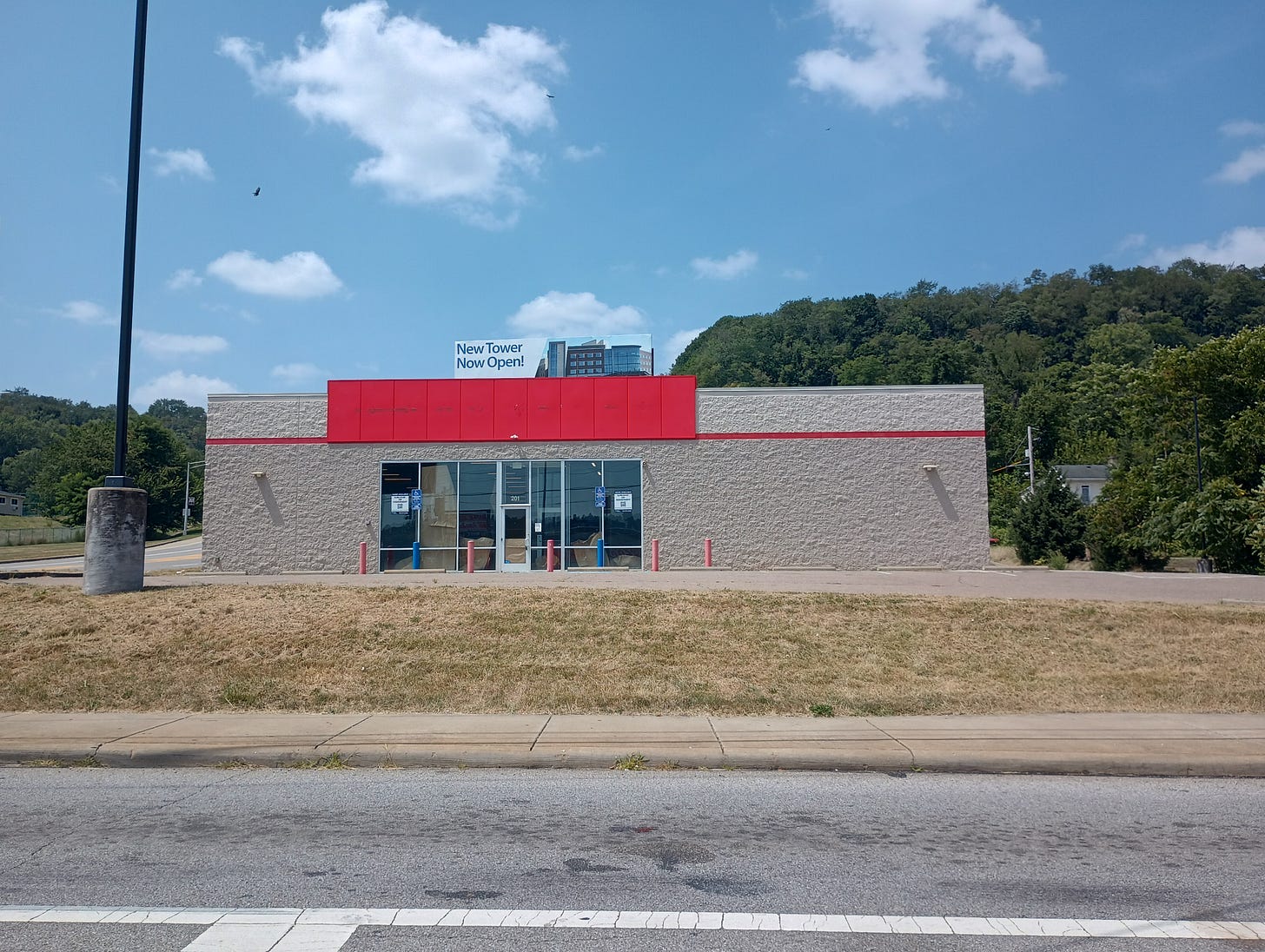Last year the City Council tabled a proposal to sell off some of the city’s municipal property – a large lot on the South End which used to be the (beautiful) Grant School, torn down in 2004 – to Dollar General, which would use the lot to open its second store in Steubenville, its 20,663rd (probably more; they were at 20,662 earlier this year) in the country, and the third dollar store in downtown Steubenville. It has now returned as an issue, with the mayor pressing for the sale before he leaves office.
In general, I think the city should be cautious about selling off its downtown real estate. The city should be redeveloped, and municipal property is a key part of any future development. Public squares, parking lots, playgrounds – all of these should be part of any redevelopment, and we would look to the city to provide them. The Grant School site may or may not prove to be the best location for any of these things, but a future plan will need flexibility. Right now the city school district uses what might be a useful lot for a playground as a parking lot for schoolbuses. If it became a playground, the schoolbuses would have to go somewhere else. Holding onto assets provides such flexibility.
However, if the city has the opportunity to lure a worthy business that could not get here any other way, then of course I think they should consider the sale of municipal property. However, I don’t think this sale qualifies.
First of all, and most importantly, Steubenville already has a lot of buildings. We have a lot of buildings that are empty. In fact, a perfect Dollar General location has recently been discussed in City Council meetings as a problem property: 201 North 7th Street is in a prominent location at the intersection of Washington and 7th, and is very publicly empty. This is a bad look for the city as it is, but the owners of the property also had grass three feet long which provoked a City Council discussion. The city would kill two birds with one stone if Dollar General simply leased or bought this property.
201 North 7th Street was a big deal in the city when it was built ten years ago, as a piece of “economic development” (in a span of two years, it sold for $6,000, then $75,000, then $1.8 million). Well, now it’s empty. Rather than have another property go empty, I think we should try to get a tenant for it. Dollar General seems like a perfect fit. If that property is not big enough (6000 square feet), the old supermarket is right across the street. People who like Dollar General claim that its “DG Market” stores are satisfactory as supermarkets; well, put it into a supermarket building and see how it goes.
Given the existence of suitable empty buildings downtown, I don’t see why we should erect another building. The most likely outcome of Dollar General’s arrival, to be quite honest, would be forcing at least one of the two existing downtown dollar stores to close – which would mean yet another empty building downtown. This is the general knock on Dollar Generals – they don’t lead to further development, in fact they often result in overall business loss. Dollar Generals don’t make people buy more oreos or brooms or tylenol – they just cannibalize those sales from supermarkets, smaller convenience stores, hardware stores, gas stations, or drug stores, all of which take a hit when a Dollar General arrives.
This doesn’t sound like a win for the city. The city would be competing against property owners who have suitable locations for this business, and perhaps creating new empty buildings downtown. The city would also be kicking out the Steubenville Farmers’ Market, which currently uses the Grant School lot, as well as taking away parking for the Greek Festival.
Last I heard, the mayor’s main public reasoning was that no other use for the space was presenting itself, so it’s better to have something than nothing. So I will here tell a story which contains an idea for the Grant School property, so the alternative does not have to be nothing:
In the 1733 James Oglethorpe laid out the city of Savannah, in Georgia, with six public squares, one every two to four blocks. The city leaders continued this policy, ultimately laying out twenty four squares before discontinuing the practice in the late 19th century. By the mid-twentieth century, the city was suffering from urban decay, and the city started tearing down houses, eliminating the old squares in favor of large developments, putting in highways, the usual. But old residents started to resist. Savannah got a new college, the Savannah College of Art and Design (SCAD), which became an engine of downtown revitalization. As more and more Americans realized that something important was lost when we destroyed our walkable cities, Savannah came back. The Oglethorpe plan – almost three hundred years later – became Savannah’s calling card, as people discovered that in fact it was the best city for walking in the whole country. Now the old houses in downtown Savannah, which you could have picked up for ten thousand dollars apiece sixty years ago, go for two or three million.

Steubenville has a perfect opportunity to implement a new Oglethorpe Plan, and create five or six (or more!) public squares in downtown Steubenville. The squares themselves are cheap to start – just don’t build on them. There is enough empty ground in downtown Steubenville to lay them out right now. Some squares might be designed by a single architect and developed as a whole, while others might simply allow for people to build houses as they wish (as Oglethorpe did). A grand plan like this – the first time Oglethorpe’s plan had been used for a city in almost three hundred years! – would be interesting enough to draw national attention and donor and developer interest. We also have a new downtown college, the College of St. Joseph the Worker, to play the role that SCAD played in Savannah. It doesn’t have to happen overnight - Oglethorpe’s six original squares didn’t get built up for more than a hundred years after he laid them out. But the town stuck with the plan, and now they live in what is probably the prettiest city in the United States.
That would be worth using the Grant School lot for.
P.S. One further note: the mayor has also noted that Dollar General is willing to pay $300,000 in “remediation” costs. Apparently when the building was demolished, the demolition was done poorly and the lot is not ready to be built upon - in particular, the fill is of poor quality not suitable for building. It’d be interesting to know who did the demolition. Anyway, this becomes yet another argument for turning it into a square (i.e., not building on it). There is another argument as well: this spot is the old city cemetery. Apparently when the city decided to develop it, they told people that if they wanted their dead they could come get them - and many were indeed exhumed and reinterred up in Union Cemetery. But every time the ground has been disturbed here, more human remains have been found.









Who are these people making these terrible decisions? Are they elected? Sounds like it's time for a change of governance to me.
I'm not sure what the point is to have another dollar store in general (not to mention the well known issues with dollar stores and I would add Dollar General's also hideous signs.)
The city needs an investor (or business who will invest) in jobs that service jobs from locals, but provide business services to outside of the area, whether it be office or blue collar jobs.
Ideally both office and blue collar jobs of course, but for downtown, someone/group investing in its small office space would be significant. Imagine updating the bank towers etc.
Those jobs would be mean more people getting lunch, which would help fill in some of the nearby empty spaces etc.
And yes, absolutely public squares and spaces would be welcome.